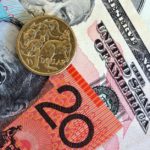Gold declined for a fourth day on Tuesday as concern over a U.S.-led attack against Syria continued to fade and a stronger greenback pressured dollar-denominated commodities. Signs for slow but consistent stabilization of global economic activity reduced the metals demand prospects.
On the Comex division of the New York Mercantile Exchange, gold futures for delivery in December traded at $1 385.90 per ounce at 8:17 GMT, down 0.73% on the day. Prices held in range between days high and low of $1 395.20 and $1 389.00 per ounce respectively. The precious metal fell for a third straight day on Monday and is marking a 0.7% weekly decline so far after plunging 0.17% in the preceding week.
Gold marked the first back-to-back monthly gain in August as geopolitical turmoil in the Middle East spurred safe haven demand for the metal. Receding international tension however pushed prices back from a three-and-a-half month high of $1 433.50 per troy ounce on August 28 as the U.K. House of Commons turned down Prime Minister David Cameron’s proposal last week to support the U.S. in an intervention in the Syrian civil war.
Meanwhile, lawmakers from President Obama’s own Democratic Party were skeptic about the plan, expressing concern that the United States would be dragged into a yet another war in the Middle East. Meanwhile, Republican Senators John McCain of Arizona and South Carolina’s Lindsey Graham, two of the biggest critics of Obama’s stance on Syria, urged their colleagues after being persuaded at a White House meeting to recognize the risks that the use of chemical weaponry implies and support Obama’s intentions.
In economic news on Monday, upbeat China and Europe data showed signs of consistent economic stabilization. Spain’s manufacturing sector marked an expansion for the first time in two years and surged to 51.1 in August from 49.8 in July, outperforming analysts’s projections for a reading of 50.1. France’s manufacturing sector marked an expected contraction as the country’s PMI remained flat at 49.7, meeting projections. Germany and Switzerland’s indicators remained in the expansion zone but posted a retreat from the preceding month, falling to 51.8 and 54.6 in August from 52.0 and 57.4 in July respectively.
However, Great Britain’s Manufacturing CIPS rallied to 57.2, the highest since 2 1/2 years, surpassing expectations for a surge to 55.0. This was the biggest advance in nineteen years. July’s reading was revised upward to 54.8 from an initial reading of 54.6.
The general Euro zone’s Final Manufacturing PMI surpassed analysts’ expectations for remaining unchanged at 51.3 and rose to 51.4, indicating the the single currency bloc’s economic activity is consistently improving.
On Sunday, the Chinese National Bureau of Statistics reported that the country’s manufacturing Purchasing Managers’ Index surpassed forecasts for a jump to 50.6 according to a Reuters poll and rose to 51.0 in August, the highest since last April, from 50.3 in July.
Earlier on Monday, according to a separate private survey by HSBC and Markit Economics, the HSBC Purchasing Managers’ Index surged to 50.1 in August, marking a major improvement from July’s 11-month low of 47.7 in July and ending a three-month declining cycle. Chinese manufacturers signaled a slight expansion in growth that was based on improving market conditions.
Meanwhile, speculations that the Federal Reserve might begin tapering its $85 billion per month bond purchases continued to weigh on the market. On Thursday, the Commerce Department reported that the U.S. economy grew more in the second quarter than previously estimated in July. The U.S. Preliminary (Revised) GDP marked a growth of 2.5% from a year earlier, compared to the flash reading of 1.7% published on July 31 and surpassing analysts’ expectations for a correction to a 2.2% advance.
Meanwhile, the Department of Labor reported that fewer people than anticipated filed for initial jobless payments last week. In the week ended August 24, U.S. initial jobless claims fell to 331 000, beating forecasts for a drop to 332 000 from the preceding period’s upward revised reading of 337 000 claims.
Mixed data on Friday left market players ambivalent about their outlook for Quantitative Easings tapering timetable. The dollar index, which measures the greenbacks strength against a basket of six major currencies, rose by 0.13% to 82.43 at 8:14 GMT, a fifth consecutive daily advance. The September contract rose to a 1-month high of 82.47, while days low stood at 82.28. The U.S. currency gauge settled 0.86% higher last week after advancing 0.3% in the preceding two five-day periods.
Market players will be keeping a close watch on this week’s key U.S. data to gauge the American economy’s strength and build up expectations for a QE tapering timetable. On Tuesday, the ISM Manufacturing index is expected to have fallen in August, while the Markit U.S. Manufacturing PMI should have remained flat. On Wednesday, the U.S. trade deficit is projected to have widened to $38.6 billion in July from $32.224 billion in June. Thursday’s ADP Employment Change will provide preliminary information for the U.S. labor market. Also on Thursday, Q2 Non-Farm Productivity and Unit Labor Costs should have increased, while the ISM Non-Manufacturing Composite and Factory Orders are expected to have declined. On Friday, the U.S. Non-Farm Payrolls should have surged in August, while the Unemployment Rate likely remained unchanged at 7.4%. Average Hourly Earnings and Average Weekly Hours are anticipated to have increased as well.
Morgan Stanley analysts led by Adam Longson wrote in a note: “We maintain a fairly pessimistic outlook for gold as a result of the increased probability of a timetable for the ending of QE. The gold market ran out of steam after military action looked to be delayed.”





